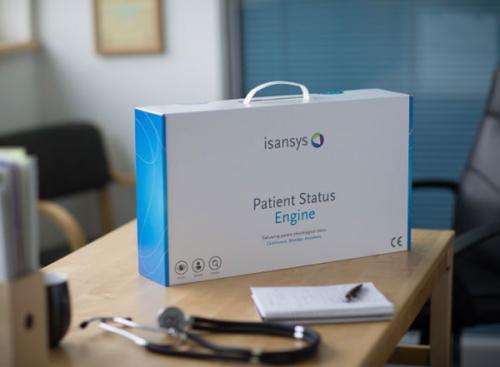Testing wirelessly-monitored thermometers for improved patient safety

The Lifetemp device is part of a wireless patient surveillance system developed by Isansys, which allows healthcare providers to remotely monitor a patient's vital signs even after they've left the hospital. The system collects and analyses patient data, such as temperature, heart rate and respiration rate, alerting healthcare providers if it detects the early signs of sepsis - a condition which kills 37,000 patients in the UK annually.
Wirelessly-readable thermometers need to perform consistently as the wearer's surroundings change, and Isansys were looking to accurately calibrate their device in a range of different environments. Finding a test facility which could accommodate Isansys' requirements proved to be difficult. NPL's environmental chamber, which is capable of producing a range of temperatures and humidities, offered the exact test conditions Isansys was looking for.
Karen Alston and Radka Veltcheva, of NPL's Temperature & Humidity Group, used a newly-commissioned dry block calibrator facility inside an environmental chamber at NPL to accurately calibrate the thermometer at a series of fixed temperatures over a range of ambient temperatures (from 15 °C to 35 ºC) and humidities (from 20 % rh to 80 % rh). The time response of the device to applied heating and cooling was also measured.
This is the first time NPL has performed such a calibration and Isansys was delighted with the service NPL provided. A representative from Isansys Lifecare said:
"After a long search for a supplier able to run the test for us, NPL was the only one who provided us with a solution. We are really pleased with the service and results, and we would use NPL's services again with no hesitation."
More information: Find out more about NPL's work on Temperature & Humidity: www.npl.co.uk/temperature-humidity/
Provided by National Physical Laboratory





















